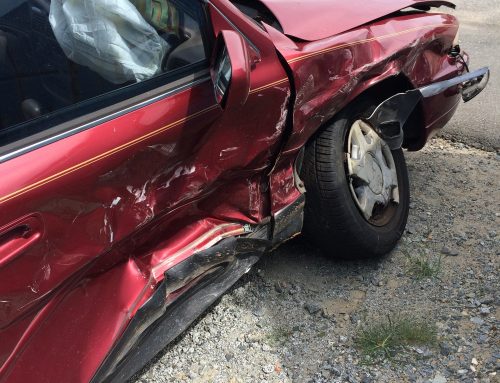Here in South Florida, driving on the highways can be an intense experience. Not only do we share the roads with millions of seasonal visitors and vacationers, but there are thousands of semi-trucks barrelling down these roads as well. highway safety should therefore be taken very seriously.
Semi-trucks can be dangerous due to their sheer size and speed, but also because they have significant blind spots. Commercial trucks such as 18-wheelers, tractor-trailers, and big rigs, have blind spots on all sides of them. The driver cannot see the motorists, bicyclists, pedestrians, or objects if they are positioned in the blind spot.
Blindspot accidents involving semi-trucks often result in wrongful death lawsuits and serious injuries. Educating yourself as to the location of the blind spots can help you to avoid a traumatic accident with a semi-truck.
Semi-Trucks, Blinds Spots and Highway Safety
A vehicle traveling in the truck’s blind spot cannot be seen by the driver. Therefore, they could change lanes or make a turn completely unaware of your presence. That is why you should never drive in a trucker’s blind spot – known as no-zones – or you could be seriously hurt of killed. In order to stay out of their blind spot, you must know where those spots are. Here is your highway safety guide to commercial truck blind spots.
- Passenger Side / Right Side: The most significant blind spot for a truck driver is located on the right side of the vehicle. The blind spot runs all the way from the front of the truck to the rear of the truck. Depending on the position of the other vehicle, the blind spot may extend out two lanes to the right of the truck.
- Driver Side / Left Side: The blind spot on the driver’s side of the truck reaches one lane out from the truck. It starts at the front of the cab and extends approximately halfway down the side of the trailer.
- Front and Rear Blind Spots: Blind spots also exist at the front and rear of the truck. Depending on the size of the truck, the blind spot can extend up to 40 feet.
.
How To Pass
- Typically, it is safest to pass on the left side of a semi-truck. The blind spot is much shorter than the one on the right side of the truck.
- When passing a large truck, pass as quickly as possible so that your vehicle remains in the blind spot as briefly as possible.
- When driving behind a truck, maintain several car lengths to ensure that the driver can see your vehicle.
- If you cannot see both side mirrors on the truck’s cab, the driver most likely is unable to see your vehicle.
- When merging in front of a semi-truck, allow for extra distance before moving in front of the truck. A vehicle of this size cannot stop as quickly as a car, and if you cut in too close you may be rear-ended or cause the truck to jackknife.
Truck Versus Passenger Vehicle
Truck drivers do have a responsibility – just as motorists do – to be aware of their blind spots before moving into an adjacent lane. But in the event of an accident, a passenger vehicle simply cannot compete. The impact of a collision with a commercial truck is often a total demolition of the smaller vehicle. There is also significant potential for fires and explosions.
Therefore, victims of semi-truck accidents have an elevated risk of sustaining permanent disability.
Treatment and care for these traumatic injuries can be very costly. These victims may also be unable to work and lose their ability to support themselves and their family. As you can expect, damages arising from this types of accident can total millions of dollars.
Enlist Professional Help
If you have been in a car or truck accident, call the experienced accident attorneys at Probinsky & Cole. During this challenging time, we can help you to fight for the compensation you deserve.








